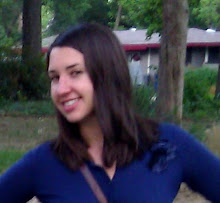I got to see some quilt historians at work recently at the Great Smoky Mountain Heritage Center in Townsend, TN. As a part of the third annual Quilters Road Show, there were free quilt evaluations by Becky Harriss and nationally-known quilt authority, Merikay Waldvogel.
Collectors, makers, and family heirloom holders brought a total of 50 quilts to the Center’s auditorium where Harriss and Waldvogel were set up on stage with a microphone.
They spread quilts out over a table, bed turning style, and asked the quilt owners to tell what they knew about their quilts. Then Hariss and Waldvogel looked at material, patterns, and technique to give each quilt an approximate date and noted information about the history of quilts as it was triggered by each quilt.
An expert on quilts from the 1930s, Waldvogel told us that pastels were huge during that era, and when a lady brought in a quilt colored mostly in a shade called Orchid, Waldvogel had stories about how popular that particular shade was.
A mother and her teen-aged daughter brought an unfinished quilt top that had belonged to a grandmother. After talking about how the appliquéd butterfly pattern was a symbol of rejuvenation in the 30s, Waldvogel flipped the quilt over and pointed out that the blocks were made from sacks of Lily White flour. She could guess when it was made because she knew what weights of flour were available in what years.
There were three quilts with the pattern known to much of the quilting world as Sun Bonnet Sue. All three of the owners present knew the pattern as Dutch Dolls, as is common in much of the South.
Among the 50 quilts evaluated were two that were made in Wheat, the community that dissolved in 1942 to make room for the Manhattan Project and Oak Ridge. There was a quilt dated 1924 and embroidered with the Elks Lodge’s crest and other images important to the fraternal organization. The oldest piece of the day was a white-on-white crewel coverlet embroidered with the Tree of Life from the early 1800s.
Waldvogel talked about a four-year-old Noah’s Ark panel quilt that a child had insisted his mother take to the event along with her antique quilts. Waldvogel advised the mother to make a label for the quilt by writing down the quilt-maker, the receiver, the date and the occasion on a piece of cloth and stitch it on the back.
Waldvogel asked the holders of the oldest and most interesting quilts to pass them on to younger family members because she finds that when quilts stay within a family, information remains intact better. She also urged those who own quilts with great cultural significance to consider donating them to museums.
Volunteers photographed and collected information on each quilt evaluated at the event so that the quilts can be put into an online database available to everyone.
Sunday, January 18, 2009
Subscribe to:
Post Comments (Atom)





1 comment:
my goodness! I haven't checked in with your blog in almost a week and I have some catching up to do! I love this article about quilt documentation- it makes me really proud to be from an area of the south with such a unique quilting history. And I am so happy that the art is still alive! It seems like interest in quilting is back on the upswing. Would you agree?
Post a Comment